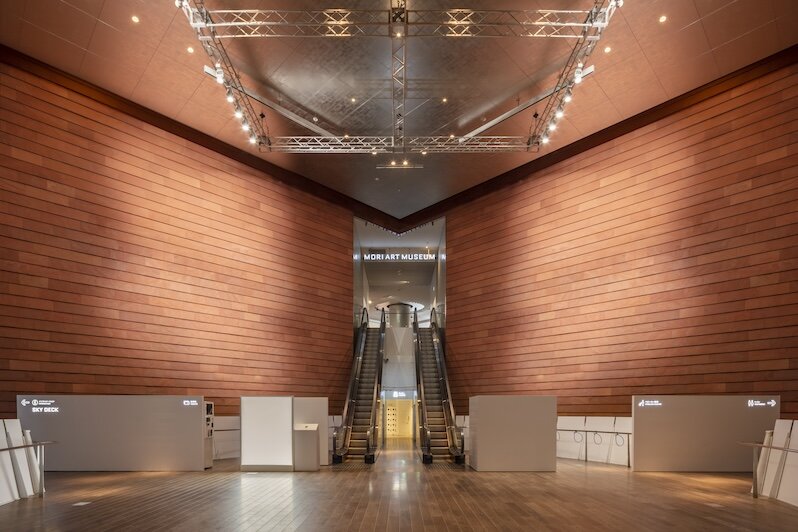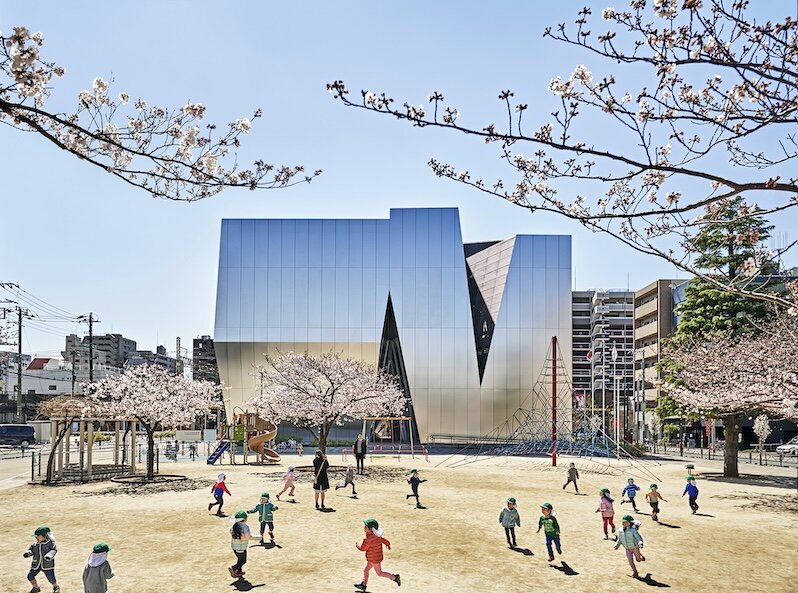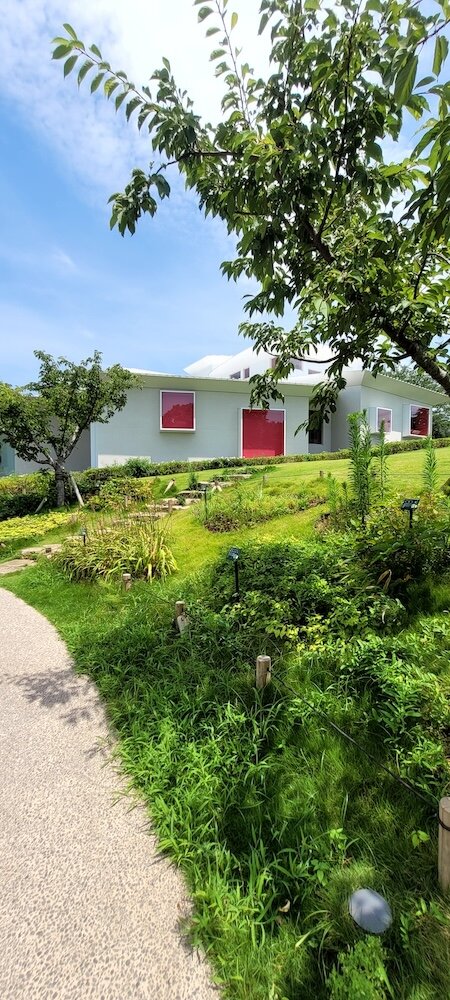As a metropolis that is constantly evolving, Tokyo might feel overwhelming for visitors, especially the first timers, or even the seasoned ones. Fortunately, respites from the fast-paced electronic mecca are plentiful within the city itself. Apart from the many parks and gardens, Tokyo is home to many art museums and galleries, where you will be able to carve out a solitary, meditative vacuum while soaking in some culture.
As art lovers will testify, throngs of visitors flock to the many well-known art attractions in Tokyo, a polar opposite to the peace and calm one might be seeking. Luckily, you have other options? Some of these museums and galleries are famous but have plenty of space for everyone while others are smaller and still off the radar of most visitors. Maybe the solace you seek is found here.
Yayoi Kusama Museum
Located in the neighborhood of Nishi Shinjuku, between the tranquil Kagurazaka and the youthful Waseda University campus, Yayoi Kusama Museum is an art museum that solely exhibits the contemporary artist's artworks. From the outside, it is a sleek building located on a small plot of land along a nondescript row of low-rise buildings. It stands out from the rest due to its curved exterior and pearl white paint with only a simple signage, as well as a long line of visitors waiting to enter according to their reserved time slots.
The museum’s interior is minimalist, serving as the perfect backdrop against Kusama’s colorful paintings and artworks. Meanwhile, the architecture is also well-thought-out; the spiral staircase from one level to another, for instance, provides ample space for the artworks to be displayed prominently and at the same time allows you to admire the art at your own pace. The crowning glory of the museum is its outdoor space at the top level, where “Yellow Pumpkin” is displayed against an open roof and a glass wall, creating a panoramic, contemplative view of the surrounding neighborhood - a perfect spot for your Instagram feed!
Mori Art Museum

(Photo from: Mori Art Museum)
Mori Art Museum is one of the major contemporary art museums in Tokyo and is located in one of its busiest areas, Roppongi. Yet, due to its multiple exhibition rooms, you will be able to take time to enjoy the ongoing exhibition at your own leisure. Mori Art Museum has an established reputation as the venue for high-quality exhibitions that champion contemporary artists from Japan, including its signature Roppongi Crossing, a series of curated exhibitions staged every three years.
Apart from that, the museum has also featured international artists, such as Leandro Erlich, who is an Argentinian famous for his optical illusion installations and had an exhibition here in 2017. It was also the museum of choice by renowned Japanese artist Takashi Murakami to premier his 100-meter long magnum opus "The 500 Arhats" in Japan back in 2015. Mori Art Museum is housed in the Mori Tower, one of the tallest skyscrapers in Japan. To complete the art immersion experience, you can also visit the indoor observation deck on the 52nd floor (Tokyo City View), where bird’s eye views of the metropolis unfold before your very eyes.
Sumida Hokusai Museum

(Photo from: Yosuke Owashi)
The Sumida Hokusai Museum is located in the peaceful Sumida area, where Katsushika Hokusai, the master of ukiyo-e (woodblock print), was born in 1760. The artist spent most of his life in this ward. Despite the museum being dedicated to an artist of a traditional Japanese art, the metal-sheen façade of the building as well as the overall architecture of the museum is futuristic. It might be a new addition to the neighbourhood, but the museum seamlessly integrates into its surroundings, with no barrier to the sidewalks and a playground near its entrance.
The interior is equally impressive with state-of-the-art display technology. It also features dim lighting, which gives prominence to the artworks and creates connections between the traditional artworks and present-day visitors while ensuring preservation of the delicate prints and the actual ukiyo-e tools. In AURORA (permanent exhibition room), you will be able to view full-scale high-definition replicas of the original prints of Hokusai as well as interactive and static exhibits that chart his life and journey in the art of ukiyo-e, which evoke his famous quote: “But all I have done before the age of 70 is not worth bothering with...When I am 80 you will see real progress. At 90 I shall have cut my way deeply into the mystery of life itself.” The original prints are on view in periodically held exhibitions.
SCAI The Bathhouse
SCAI The Bathhouse was originally a sento, a traditional neighbourhood bathhouse. It is located in Yanaka, a neighborhood in the Ueno area that exudes the vibes of Old Tokyo. Although the interior of the 200-year-old bathhouse has been renovated into a minimalist contemporary art space, remnants of its past identity such as the curved kawara (tiled) roof remain. The bathhouse double doors and lockers for geta (wooden shoes) storage are still found there too. Since its opening as an art gallery in 1993, SCAI has hosted many renowned artists and their artworks from Japan and abroad. Most of the exhibitions are avant-garde in nature and consistently push the boundaries of art.
One of the most memorable exhibitions at SCAI is by Japanese artist Mariko Mori, who reinterpreted the kojiki, a folk tale on the origin of Japan and the Japanese people. She integrated the conventional forms of art such as painting and sculpture with site installation, light projection and an augmented reality (AR) element. Even though the high-ceilinged space is small compared to other galleries or museums, SCAI is mostly sought by art enthusiasts who are willing to make the trip to Old Yanaka for the aesthetic they are after.
Kiki’s Museum of Literature

Kiki’s Museum of Literature is run by the local government office in Edogawa. Situated in Nagisa Park next to the Kyuedo River, it was established to honour Edogawa’s local author, Eiko Kadono, known for her novel "Kiki’s Delivery Service," which has been adapted into an animated movie by Studio Ghibli. The museum, designed by highly acclaimed architect Kengo Kuma, consists of three, non-linear stories that follow a mutual concept — a fuchsia-pink Kiriko town where Kiki moves to in order to practice her magical prowess.
Dominated by shelves of books, the museum has a theatre on the first floor, where you will be treated to an interactive storytelling session with characters from Kadono’s works such as Ringo-chan. A corner on the second floor is for Kadono’s fans, where they can learn more about her background, inspiration, daily life and the accolades that she has received. Cafe Kiki, serving fun-inspired food and beverages, is on the third floor, with both indoor and outdoor seating overlooking an idyllic river. The museum may not be your typical art destination but it is a perfect place where your inner child can roam free.
This list of art galleries and museums in Tokyo is non-exhaustive. The vibrancy of the city’s art scene means that it is impossible to tabulate them all here but hopefully the selection above provides you with a glimpse of an alternative charm that Tokyo has to offer.

